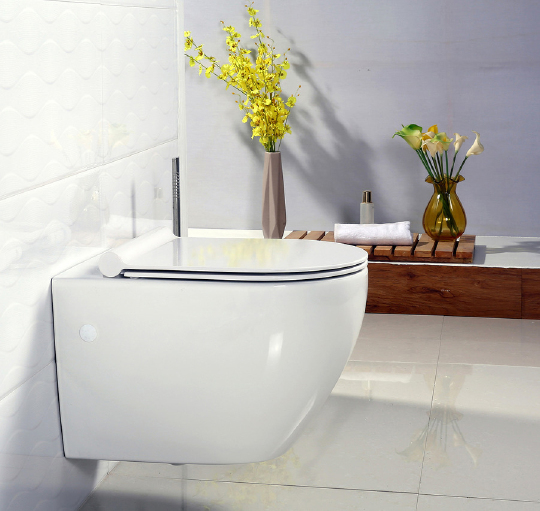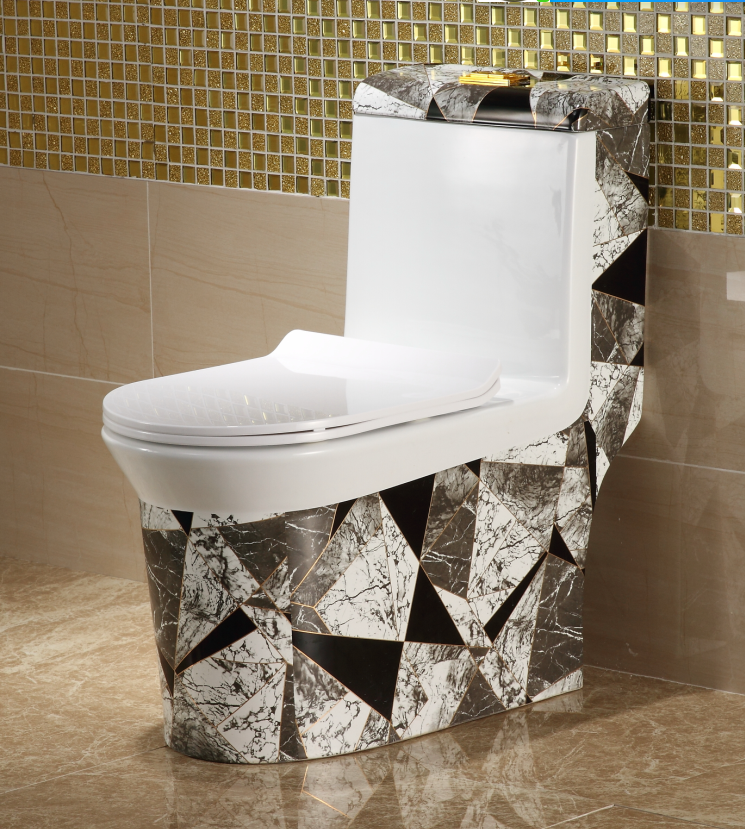Toilet device
It is difficult to imagine modern housing without this plumbing fixture. Proper repair or replacement of a toilet requires knowledge of the principles of its operation and other features. What a toilet consists of, read about the types, design and functioning of plumbing in our material.
The content of the article
Types of toilets
Models vary depending on the parameters:
- bowl shape (funnel-shaped, dish-shaped, visor-shaped);
- mounting method (floor and hanging);
- flushing method (direct and circular);
- connection to the sewerage system (vertical, horizontal, angular - selected depending on the location of the entrance);
- materials used (faience, porcelain, metal, cast iron, glass, stone, plastic).
On a note! The main indicators of the products are specified in the standards and cannot be changed at the whim of the manufacturers: height from the floor 40 cm, tank capacity from 6 liters, load within 200 kg.
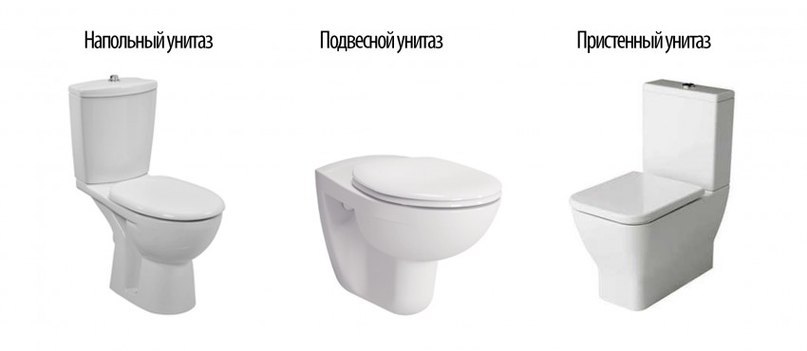
Design of a simple toilet
Main components of the system:
- bowl, has a connection to the sewer;
- a drain tank equipped with equipment for draining and collecting liquid;
- flexible or rigid (in the form of a pipe with nuts) liner through which water is supplied;
- gasket between plumbing fixtures and sewer outlet, its corrugated straight or eccentric versions are used (depending on the type of outlet);
- a seat with a lid is located on top of the device and provides user convenience.
Important! The diagram contains the required number of rubber parts that create a seal between the various parts of the plumbing.
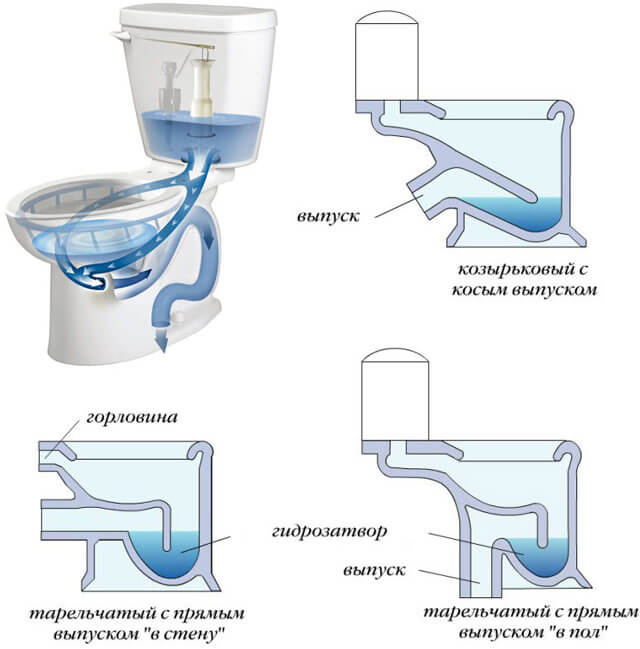
Bowl device
This a one-piece product, the appearance of which determines the degree of cleanliness of the toilet after flushing. There is a siphon inside it, always filled with water, it blocks the penetration of gases and odors from the sewer into the room.
Varieties of the element have their own characteristics:
- The dish-shaped design (has a shelf in the rear wall) is considered obsolete, is characterized by high water consumption, waste is poorly washed off, and rusty smudges may appear over time. However, good filling of the hole ensures that there are no splashes on the surface.
- The visor shape is common in imported products, it is made at an angle forward (up to 45º, the higher the value, the less likely the droplet splash), it does not accumulate bad odors, and there is no rust.
- The funnel-shaped version has good hygienic properties. It combines the advantages of previous models, plus it provides moderate water consumption. The hole is located in the center and provides high-quality flushing. But during the descent, splashes are possible.

How does the drain mechanism work?
This locking device performs two tasks:
- prevents accidental drainage of liquid into the bowl (closes the hole until the key is pressed);
- protects the container from overflowing with water (using an overflow tube), articulates with the lever and regulates the liquid pressure when draining.
On a note! The design containing a retractable rod is obsolete; now it is replaced by a lever located inside the system. A button on the lid of the tank (or built into the wall of the room) activates its operation.
There are options with one or two buttons. In the first case, when pressed, the liquid descends entirely; in the second, there is a mode for both full descent and half the volume. In some models, one key combines both functions (the depth of pressing determines the amount of fluid released). This allows you to save resources if there is no need to completely empty the container.
The type of descent distinguishes between cascade and circular drainage:
- In the first case, one powerful stream emerges from the hole, directed straight down. This method does not save water and washes the bowl unevenly, but it is distinguished by the reliability and durability of the system.
- In the second variation, liquid is supplied from a group of holes under the rim of the toilet; it silently flows in a circle and completely cleans the surface of the plumbing. The service life may be reduced due to clogging of cracks (if they have a small diameter).
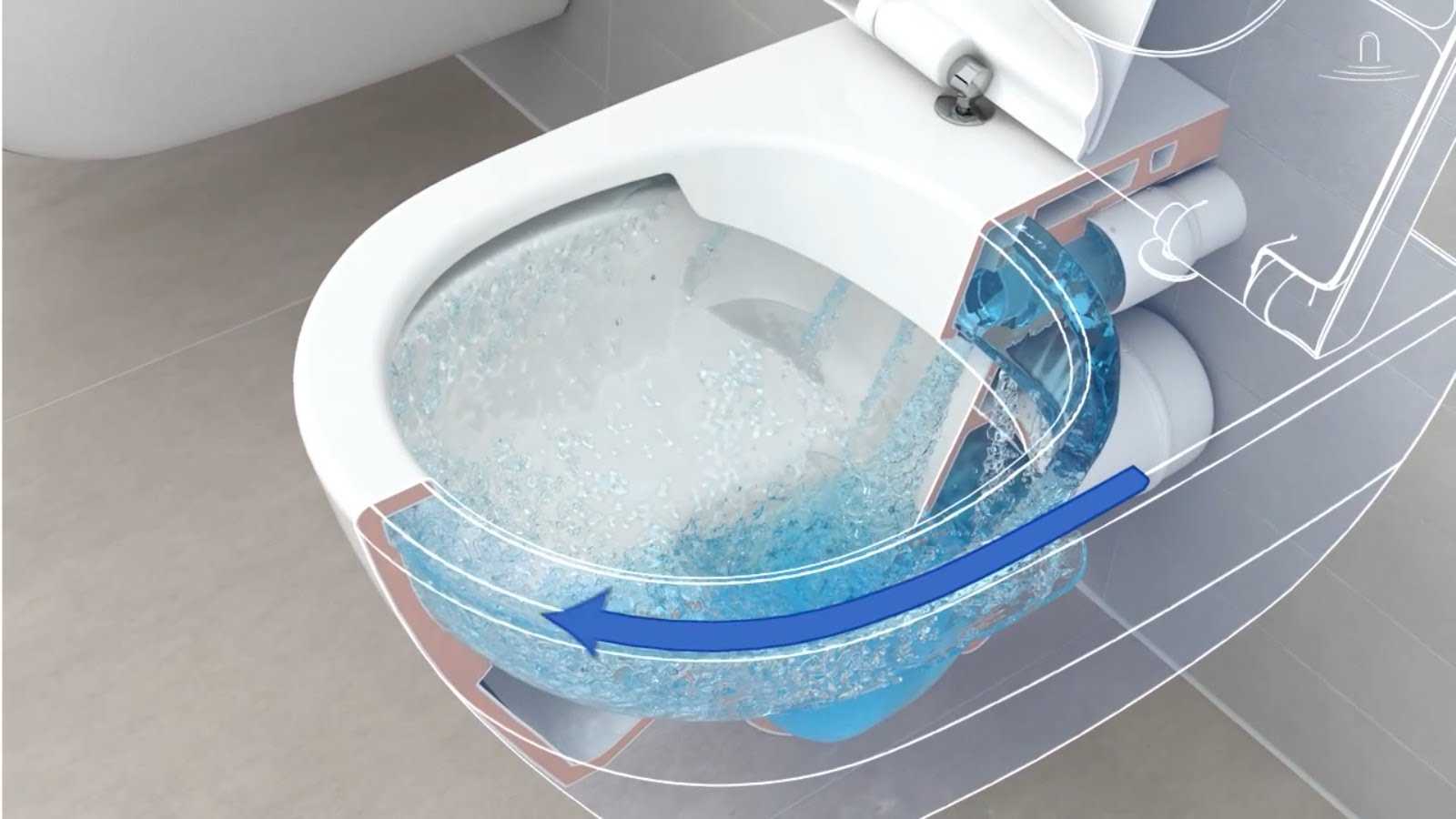
Cistern
This is the most technical complex and integral component of the system. It is a reservoir with 2 (or 3) openings for supplying and draining liquid. Includes two components:
- the inlet valve contains a float on which the water level depends (it rises higher as it is filled, and blocks its further accumulation), connected to a flexible water hose.
- shut-off valves, responsible for draining.
Important! The device can be adjusted to reduce liquid consumption, but its minimum volume will not clean contaminants well.
The element is mounted in one of the following ways:
- above the main device;
- attached to the device (compact toilet);
- built into the wall of the room (hidden installation, installation).
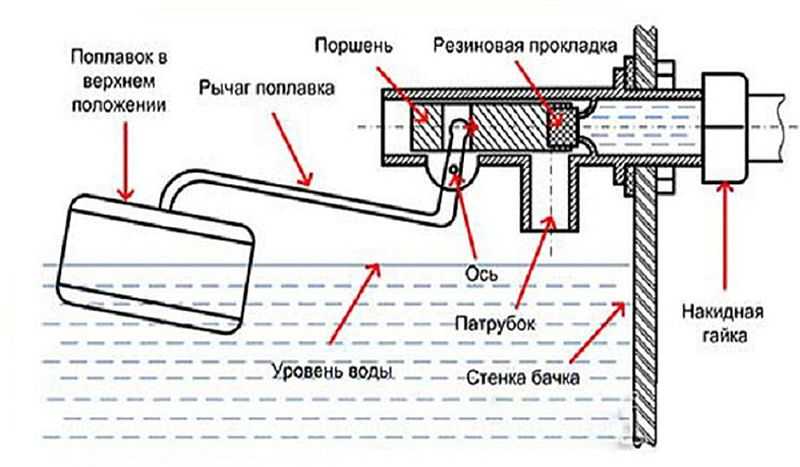
Vacuum toilet
This newest modification does not differ in appearance from standard plumbing fixtures. Its advantage is the economical consumption of water, due to the use of not only liquid, but also air masses in the drain.
Reference! During one descent, the system consumes a liter of liquid and air, versus 8 liters in the usual version.
The structure and components of the device correspond to the classical scheme, this valve, exhaust controller, etc.. The structure can be installed both on the floor and on the wall. The method of operation is simple and efficient. Its features:
- special vacuum pumps promote rarefied air;
- When pressed, the key opens the valve, air flows in;
- the water valve is in contact with the flush hole through a hose;
- the button activates the flushing mechanism.
When the set period ends, the vacuum valve returns to its original position, the activity of the water seal can be extended by the screw on the key.
The draining is completed, the liquid begins to flow again. If you press the button at this moment, the hole will open and air masses will rush into the bowl, they will remove both dirt and remaining odors.. At the end of this procedure, the supply system will flush the toilet with a minimum amount of water, and the valve will return to its original position.

How does a wall hung toilet work?
This equipment has significant external differences from other models, but its operating principle corresponds to traditional plumbing.
Peculiarities:
- practicality, compact size;
- multifunctionality (you can attach a bidet);
- all communications are mounted in the wall and hidden under removable panels;
- overlay material that masks the fittings provides sound insulation, ease of cleaning, and comfort in use;
- Only the necessary parts remain visible (bowl with seat, control button).
The frame on which the invisible tank and pipes are attached is called an installation. It can be in two variations:
- the frame, which has different sizes, creates an even distribution of weight, with emphasis on the walls and floor;
- block, in this case the entire weight of the structure and the user falls on the non-permanent wall.
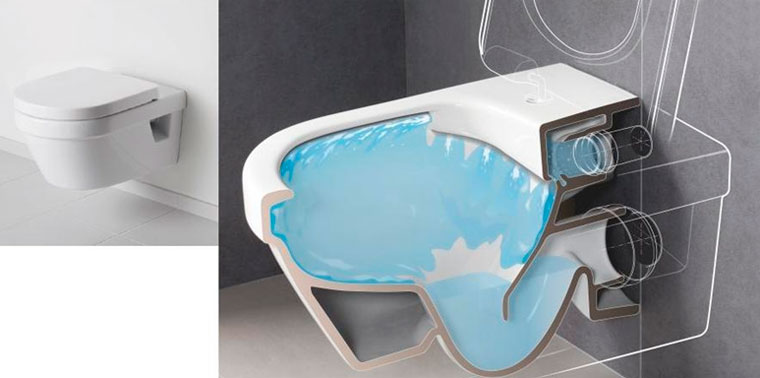
The toilet has become an integral part of the modern home. Its technical parameters are increasing along with the development of technology, but the main elements remain the same. A variety of models operating on an identical principle allow you to make a choice based on the advantages of certain parts of the plumbing (bowl shape, type of drain, etc.). We hope our article helped you understand these difficult issues.




